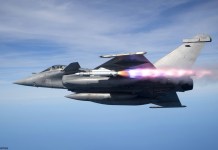Taiwan officials have confirmed the deployment of Albatross drones in the country’s Dongsha (Pratas) and Taiping islands in response to the increased Chinese naval activities in the region. The island nation has also deployed F-16 jets armed with anti-ship Harpoon missiles.
S-400 Deal: Unlike China, India Will Receive S-400 Air Defence Systems On Time – Russia
The Taiwanese Ministry of National Defense (MND) spokesperson Shi Shun-wen confirmed the reports of Albatross deployment on Tuesday, August 25, saying that the decision was made in accordance with the government’s South China Sea policy and aims to improve the Coast Guard’s defense capabilities on the islands.
Taiwanese media had been reporting that the country’s defense forces had been recently deploying the UAVs in the regions of confrontation, especially the Pratas Islands where the nation fears an imminent invasion by China. Even after confirmation, however, the Taiwanese official also requested the public to refrain from over speculations.
As the Chinese navy prepares for intensive exercises in the sea, Taiwan has been preparing to counter it for months. David Axe, a contributor to Forbes writes – “The motivation behind Taipei’s response is obvious. A Chinese war game could, in an instant, turn into an actual invasion of Taiwan. And even if it doesn’t, the upcoming concentration of Chinese forces represents a rare opportunity for Taiwanese intelligence to register Chinese ships and their capabilities.”

However, the defense spokesperson has also cautioned about the deployment news being shared by the media. “The deployment of various forces and weapons and equipment involve combat plans and should not be explained publicly. The outside world is also requested not to over speculate”, he said.
The Chinese naval exercises are expected to take place in the South China Sea southeast of Guangdong, China. The drills would allegedly simulate an island invasion, expectedly similar to Pratas Islands.
In response to the reported simulations, the Republic Of China Air Force had been conducting CAPs (combat air patrols) with its F-16s armed with Harpoon anti-ship missiles- a formidable deterrence for the PLA-Navy. An additional detachment of Marines had also been deployed in the Pratas.
China At Its Worst Behavior, US Urges Allies To Join Forces Against Beijing
The UAV will provide the forces stationed with additional surveillance capabilities, a much-needed help for the island nation. Each Albatross drone has a 5.3-meter fuselage and 8.6-m wingspan. It can carry a payload of 55 kilograms and fly at a height of up to 4,000 m for a maximum of 12 hours.
“The drones could detect signs that the Chinese war game is transforming into an actual invasion—and then feed targeting data to Taiwanese forces attacking the invaders. If the exercise remains an exercise, the UAVs could stay busy inspecting the potentially dozens of PLAN ships that might gather for the training,” Axe explains.




